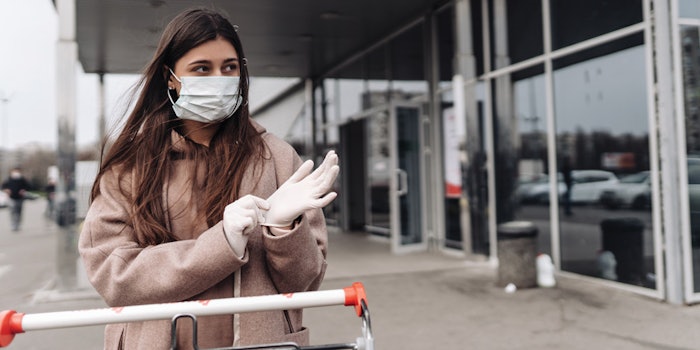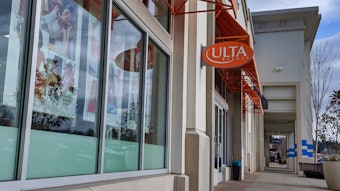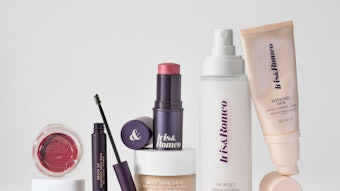
As COVID-19 restrictions are loosened throughout the United States, many questions surrounding the future of retail have been raised: What steps are retail stores taking to keep employees and shoppers safe? Has e-commerce finally triumphed over brick-and-mortar? Will consumers, many still in a socially distant mindset, even set foot in a store? And what happens if/when infection rates spike again?
It seems the only certainty is uncertainty.
For many, COVID-19 would appear to be the straw that broke the physical retail stores’ back; however, Ulta Beauty CEO, Mary Dillon, shared that in-person shoppers were not swayed by the ongoing pandemic when Ulta stores began to reopen.
“With safety continuing to guide our decisions, we have begun to reopen stores, and today more than 800 stores offer curbside pickup and more than 330 stores are open to guests,” said the executive. “While it is still early, we have seen stronger-than-expected sales in reopened stores, and we are seeing great engagement with our salon services, where availablea.”
Dillon also stated, “For much of the first quarter, Ulta Beauty operated as a digital-only business, and while e-commerce sales exceeded our expectations, it was not enough to fully offset the impact of our store closings.”
As a result of the historic shutdowns, Ulta Beauty has “taken multiple steps to reinforce its financial strength and preserve liquidity,” including lowering the volume of its inventory, reducing planned new store openings, relocations and remodel projects, and suspending its stock repurchase program.
Retailers across all markets must keep in mind that while consumers are willing to venture out to their favorite store, they will expect precautionary safeguards to care for the health and safety of both customers and retail personnel. These precautions are a must during the pandemic and will have a lasting impact on the future of global retail.
The State of Sales
At the beginning of Q2 2020, April retail sales in the United States reached $403.9 billion, a 16.4% decrease from March 2020, and a 21.6% decrease from April 2019b.
Meanwhile, Q1 2020 U.S. prestige beauty sales totaled $3.6 billion, a drop of 14% year-over-year, per NPDc. A more recent report from NPD’s Larissa Jensen shows that U.S. prestige beauty sales for Q2 so far are down, year-over-year, though results have improved compared to the steep drops in Q1. For Q2, U.S. prestige beauty sales rose 6% week-over-week April 5 through May 16.
Overall U.S. overall retail sales jumped 17.7% in May 2020d, a record bounceback, though lingering unemployment could limit the recovery.
1. Providing a Safe Shopping Environment
With 42% of U.S. consumers e feeling safe enough to go to a store, retailers must do their part to assuage the minds of the uneasy majority.
In the report, “Retail Revival in the Age of COVID-19,” design/build firm RPG encourages retailers to “rebuild a safe environment in your distinct brand voicef.”
The company suggests revisiting store layouts and space planning to alleviate customer aisle anxiety, enabling visibility of live product with protective shields among high-consumer-engagement-areas, enhancing environmental signage and way-finding to help customers navigate efficiently, and incorporating antimicrobial materials into displays and fixtures with direct customer contact.
Sephora unveiled 48 safety procedures as part of the Sephora Health & Hygiene Guidelines used during its reopening in May 2020, which include restricted store capacity, six-foot markers at registers and store entrances, one-way foot traffic, display-only testers and disposable face masks for clients in-store. See “Sephora’s COVID-19 Safety Procedures” for more information.
2. Smart Sampling Solutions
While the hygienic concerns of beauty product sampling have been addressed in the past, in a post-COVID-19 world these apprehensions can be expected to increase. Retailers will need to embrace sanitary means of engaging consumers with products.
Vengo has launched its end-to-end contactless sampling solution. The company’s programs are meant to provide solutions to both brands and consumers “in new ways that address preferences that promote wellness and safety.”
How it works:
- The shopper enters the Vengo machine number into their smartphone.
- On the phone’s browser, the shopper selects the item, which will launch an interactive brand experience.
- Vengo verifies that the shopper is a real person.
- The Vengo kiosk dispenses the sample with an end-to-end contactless experience.
- The shopper can collect the sample from the machine.
- Brands and retailers can get targeted consumer information from sample recipients who have opted in and are ready to share their preferences and try new products.
RPG, meanwhile, offers single-dose carded, modular sample dispensing systems “to maximize self-service and minimize risk.”
The system reportedly uses industry-existing, customizable, individually hermetically sealed samples that offer safe, single-dose applications. RPG explains that the systems were designed to be customized, scaled and implemented across all brands and retailers with ease of execution and maintenance.
Retailers and brands, of course, can also offer trial sizes in-store or online with purchase or by request. Furthermore, these same organizations may wish to reexamine the subscription box model to get more SKUs into consumers’ hands.
As these examples show, single-use and trial formats and touchless systems are likely to become more popular in the name of shopper safety, while perhaps creating new sustainability challenges.
3. AI Advances
For years retailers have been tasked with providing shoppers with fun, unique experiences while they browse. But, according to Modern Retail, as people are hesitant about spending time in stores, retailers are now rethinking the purpose of experiential retail. The goal of experiential retail will still be to win over customers’ loyalty and get them to spend more money with the brand—but not by getting them to spend more time in-storeg.
The new age of experiential retail will likely comprise at-home video chat consultations and AI-powered product-sampling solutions.
One example is Make It My Experience’s (MIME) foundation shade finder. The tool reportedly provides accurate shade matches without a sample and can be used in the user’s own home. Beauty retailers and brands can install the foundation shade finder on their website or mobile app.
While these solutions can help provide an easy at-home shopping experience, RPG cautions that AR and AI digital tools do not take the place of testing in real-time and that they should be strategically incorporated into existing infrastructures and work in tandem with new methods for product engagement.
As part of its Safe Retail initiative, Red Ant conducted a surveyh of more than 250 people aged 21–50+ from around the world, including the United Kingdom, the United States, China, Australia and the Middle East, regarding how they feel about the current state of retail.
The survey found:
- 12% of respondents usually buy beauty products online only.
- 42% of respondents buy beauty products in-store only.
- 46% of respondents buy beauty products both in-store and online.
- 70% of respondents feel that this will not change when stores start to reopen.
- 82% of respondents said they will try new products without sampling them in-store first.
- 75% of respondents agreed that buying beauty products involves a personal, one-to-one relationship.
- The top five most useful areas of expertise for beauty consultants are product knowledge, online beauty advice, color matching and recommendations, advice on skin type and relevant products, and tips and tutorials.
- 62% of respondents said that reviews had the biggest influence on their decision to buy, with YouTube tutorials at 12% and celebrity/influencer endorsements at 7%.
Survey respondents were quoted as saying, “For any new product, I will still buy in-store because I find makeup color matching difficult online and always use the beauty staff in-store for advice and trial.”
Other respondents stated, “I like the advice given by counter assistants and like to fully see and discuss the range.”
4. The Emergence of Dark & Twilight Stores
Dark stores are traditional retail stores that have been converted to local fulfillment centers that offer delivery or curbside pickup only (think: grocery stores, clothing brands, beauty retailers, etc.)i.
This idea began prior to the coronavirus pandemic, but will likely spread across all retail categories long after the immediate impacts of COVID-19. As previously noted, Ulta Beauty is already utilizing curbside pickup at more than 800 stores. Other beauty retailers, including Bluemercury, are offering the same.
According to Forbes, shoppers who have experienced delivery, curbside pickup and e-commerce will likely adopt at least some of those habits into their everyday lives. To truly be effective, stores need to think through their entire dark store strategy and automate wherever possible. Streamlining processes and automating order fulfillment could help lessen the strain of permanent dark stores.
In addition, retailers facing limited in-store capacity, reduced shopper visits and rising e-commerce sales could try to leverage the best of both worlds by reformatting locations as a hybrid of dark store and traditional retail outlet—think of them as “twilight” shops.
5. Amazon Chugs Along
Consumers living in a world on full or modified lockdown will likely continue to opt for online shopping long after the pandemic has ended. And when we talk e-commerce, one company stands well above the rest.
Amazon could be the hot-bed of clean and indie beauty brands in the wake of COVID-19 thanks to its Beauty Shop, Amazon Accelerator and its own clean beauty brand, Belei. Mintel research on beauty retailing states that nearly half of U.S. millennials shop on Amazon for beauty productsj.
Mintel suggests that with the uncertainty and health alarms over COVID-19, the percentage of consumers purchasing online may increase across generations. The movement to more online shopping will help boost awareness of Amazon’s beauty initiatives.
In addition, even though Amazon has prioritized essentials in the short-term, many brands found that fulfillment by merchant options have allowed them to leverage the retailer’s reach as well as their own in-house operations.
That said, Amazon’s disruptions amid the pandemic spike in the first few months of 2020 led some players to realize they may not need Amazon after all.
For the full article, please check out Global Cosmetic Industry's July/August Issue.
Footnotes:
a www.gcimagazine.com/business/marketers/financials/Ulta-Beauty-Q1-2020-Sales-Drop-327-570862671.html
b www.census.gov/retail/marts/www/marts_current.pdf
c www.gcimagazine.com/marketstrends/regions/northamerica/NPD-Q1-Beauty-2020-570038921.html; www.gcimagazine.com/business/marketers/financials/Q2-2020-Beauty-Sales-Early-Results-571101311.html
d www.gcimagazine.com/marketstrends/channels/other/US-Retail-Jumps-177-in-May--571288361.html
e www2.deloitte.com/us/en/insights/industry/retail-distribution/consumer-behavior-trends.html
f www.rpg57.com/retail-revival-age-covid-19
gwww.modernretail.co/retailers/experiential-retail-will-get-a-digital-facelift-in-the-post-coronavirus-world/
hwww.redant.com
iwww.forbes.com/sites/blakemorgan/2020/04/25/dark-stores-are-the-future-of-post-pandemic-retail/#152426487826
jwww.mintel.com/blog/retail-market-news/us-mass-retailers-and-amazon-promote-affordable-clean











